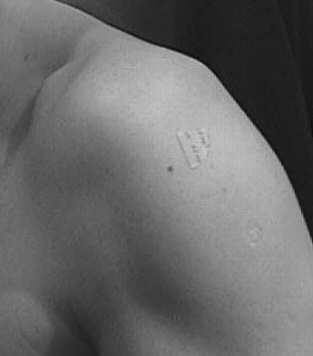A review of:
Using nitric oxide to treat tendinopathy. George A C Murrell. Br J Sports Med 2007 41: 227-231
By Art Horne

Below are a few points of emphasis worth noting when discussing this potentially helpful treatment option with your team physician and care group in regards to your basketball athlete and their patellar tendinopathy. Of course, treating the actual source of the patellar pain (hips, lack of ankle dorsiflexion, etc) is always preferred, many troublesome cases require some additional treatment approaches for athletes to get over the hump and back to high level jumping and basketball activities. Clinicians should read both this article in addition to other research articles related to the use of Nitric Oxide in the treatment of tendinopathy prior to considering this as part of your treatment protocol.
Let’s start at the end with the discussion:
DISCUSSION
“NO is important to tendon healing. All three isoforms of NOS, the enzyme that produces NO, are expressed by fibroblasts during tendon healing. Our data in animal studies, cell culture and clinical trails support the hypothesis that NO enhances extracellalar matrix synthesis and results in injured tendons having better material and mechanical properties – that is, the healing tendons are stronger on a per unit area basis than those not exposed to additional NO. The clinical trials show that delivering NO via a patch enhances the clinical recovery of tendinopathy, which is manifested by a reduction in pain, an increase in range of motion and an increase in strength.”
In the three trials outlined below, each used a commercially available NO delivery system (glyceryl trinitrate (GTN). “NO is important for the volume of tissue synthesized during tendon healing. NO is likely to be important in a number of processes, including local blood flow and host defense.”
TENNIS ELBOW
“The NO group had less tenderness and could perform more work and had greater power on the Orthopaedic Research Institute-Ankle Strength Testing System testing. The changes were most apparent at week 24. In all, 81% of patients receiving GTN patches were asymptomatic in activities of daily living at 6 months compared with 60% of patients with tendon rehabilitation alone”
ACHILLES TENDON
“The NO (GTN) group performed significantly better on hop testing and could generate more peak force at week 24. In all, 78% of patients receiving GTN patches were asymptomatic for activities of daily living at 6 months compared with 49% of patients with tendon rehabilitation alone.”
SUPRASPINATUS TENDINOPATHY
“This trial produced the most significant effects. The NO group had significantly reduced shoulder pain with activity and at night, improved range of motion in abduction, forward flexion and external rotation, and improved power in abduction, external rotation, subscapularis and supraspinatus. The changes in supraspinatus power were the most dramatic, and were significant at 6 weeks. In all, 46% of patients receiving GTN patches were asymptomatic for activities of daily living at 6 months compared to 24% of patients with tendon rehabilitation alone.
Points to consider and discuss with your care team:
• Although the treatment of knee pain and specifically patellar tendinopathy was not examined in this study, it may be a worthwhile treatment option in the future.
• It is important to note that in both the tennis elbow and Achilles tendinopathy that the most apparent results were noted at week 24.
• With that said, a treatment program involving Nitric Oxide would still require other treatment options in order to alleviate pain short-term.
• Patients should be advised that they may experience headaches while using the patches and blood pressure should be monitored for the first few days to ensure no adverse effects.
• For additional resources on Knee Pain and the Basketball athlete visit these links:
Treating Anterior Knee Pain by Professor Paul Canavan
Treating Anterior Knee Pain In The Basketball Athlete Part I by Art Horne
Treating Anterior Knee Pain In The Basketball Athlete Part II by Art Horne
